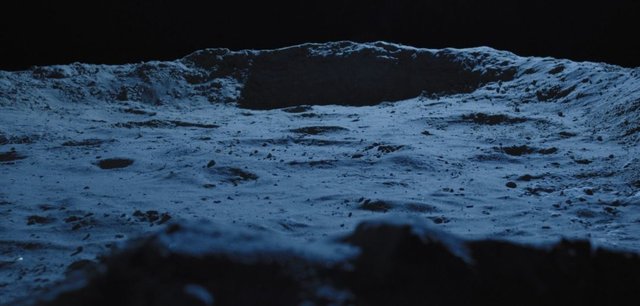Mining the water will require a massive infrastructure investment,

We live in a world where earth shattering choices are made by individuals frequently without planning. However, a few things are unsurprising, including that on the off chance that you consistently devour a limited asset without reusing, it will ultimately run out.
However, as we put our focus on leaving back to the moon, we will carry with us every one of us negative quirks, including our inclination for unreasonable utilization.
Since the 1994 disclosure of water ice on the moon by the Clementine rocket, fervor has ruled at the possibility of a re-visitation of the moon. This followed twenty years of the dejection after the finish of Apollo, a disquietude that was suggestive of a basic absence of motivating force to return.
A US Naval force video on the 25th commemoration of NASA's Clementine mission.
That water made a huge difference. The water ice stores are situated at the posts of the moon concealed in the profundities of cavities that are everlastingly without daylight.
From that point forward, not least because of the Global Space Station, we have created progressed strategies that permit us to reuse water and oxygen with high productivity. This makes the benefit of providing nearby water for human utilization more shaky, yet in the event that the human populace on the Moon develops so will interest. Anyway, how to manage the water on the moon?
There are two usually proposed replies: energy stockpiling utilizing power devices and fuel and oxidizer for impetus. The first is effectively shed: energy components reuse their hydrogen and oxygen through electrolysis when they are re-energized, with very little spillage.
Energy and fuel
The second — right now the essential raison d'être for mining water on the moon — is more complicated however not any more convincing. It is significant that SpaceX utilizes a methane/oxygen blend in its rockets, so they would not need the hydrogen charge.
Along these lines, what is being proposed is to mine a valuable and limited asset and consume it, very much like we have been doing with petrol and flammable gas on The planet. The innovation for mining and utilizing assets in space has a specialized name: in-situ asset use.
And keeping in mind that oxygen isn't scant on the moon (around 40% of the moon's minerals include oxygen), hydrogen unquestionably is.
Removing water from the moon
Hydrogen is exceptionally valuable as a reductant just as a fuel. The moon is a tremendous vault of oxygen inside its minerals however it requires hydrogen or other reductant to be liberated.
For example, ilmenite is an oxide of iron and titanium and is a typical mineral on the moon. Warming it to around 1,000 C with hydrogen diminishes it to water, iron metal (from which an iron-based innovation can be utilized) and titanium oxide. The water might be electrolyzed into hydrogen — which is reused — and oxygen; the last adequately freed from the ilmenite. By consuming hydrogen separated from water, we are compromising the possibilities for people in the future: this is the core of supportability.
In any case, there are other, more down to earth gives that arise. How would we get to these water ice assets covered close to the lunar surface? They are situated in territory that is antagonistic truly, in profound pits stowed away from daylight — no sunlight based force is accessible — at temperatures of around 40 Kelvin, or - 233 C. At such cryogenic temperatures, we have no involvement with directing broad mining activities.
Pinnacles of timeless light are mountain tops situated in the district of the south pole that are presented to approach consistent daylight. One proposition from NASA's Stream Drive Lab imagines radiating daylight from monster reflectors situated at these tops into cavities.